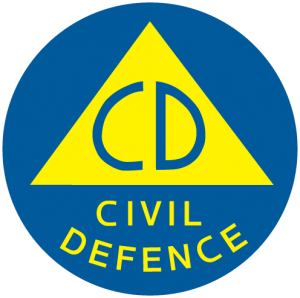Getting a study permit (or student visa) in the USA is a vital step for international students looking to pursue their education in the country. Below is a comprehensive guide to help you navigate the process.
Benefits Of Studying In USA As An International Student
Studying in the USA as an international student offers a range of unique benefits. From a diverse educational environment to potential career opportunities, here’s a closer look at the advantages:
1. Diverse Academic Opportunities
- Wide Range of Programs: The USA hosts thousands of universities offering a vast array of undergraduate, graduate, and specialized programs.
- Cutting-Edge Research: Many institutions in the USA are at the forefront of research and innovation, providing students access to state-of-the-art facilities and pioneering projects.
2. Cultural Diversity
- International Exposure: The USA’s multicultural environment allows students to interact with peers from all over the world, enhancing cultural awareness and understanding.
- Extracurricular Activities: Universities often encourage participation in clubs, sports, and other activities, enabling students to engage with American culture and traditions.
3. Quality Education System
- Renowned Institutions: The USA is home to some of the most prestigious universities globally, known for their academic excellence.
- Flexible Curriculum: Many universities offer a liberal arts education, allowing students to explore various subjects before specializing.
4. English Language Proficiency
- Language Skills: Studying in the USA helps students improve their English language skills, an essential global business language.
- Support for Non-Native Speakers: Universities often provide ESL (English as a Second Language) support for international students to ensure academic success.
5. Career Opportunities
- Networking: Students can build professional networks through university connections, alumni, internships, and job fairs.
- Work Experience: Opportunities such as Optional Practical Training (OPT) or Curricular Practical Training (CPT) allow students to gain work experience in their field.
- Potential Path to Employment: Some international students may find opportunities to work in the USA after graduation, depending on their field and visa status.
6. Financial Aid and Scholarships
- Funding Opportunities: Many universities offer scholarships, grants, or assistantships specifically for international students to help with tuition and living expenses.
7. Personal Growth
- Independence and Self-Reliance: Living and studying abroad fosters independence, problem-solving, and adaptability.
- Global Perspective: Exposure to different cultures, ideas, and ways of thinking broadens one’s worldview and fosters empathy and creativity.
8. Access to Technology and Resources
- Modern Facilities: Universities in the USA often boast up-to-date technology, libraries, laboratories, and other resources to support students’ educational needs.
9. Supportive International Student Services
- Assistance and Guidance: Universities provide support through international student offices, offering assistance with visas, housing, orientation, and other aspects of student life.
Immigration Process For Students Interested in Studying In USA
The immigration process for international students interested in studying in the USA involves several essential steps. It requires careful planning, adherence to specific requirements, and cooperation with both the educational institution and U.S. immigration authorities. Here’s a detailed guide to understanding and navigating this process:
1. Select and Apply to an SEVP-Certified School
- Research and apply to schools certified by the Student and Exchange Visitor Program (SEVP).
- Once accepted, the school will provide you with Form I-20, required for the visa application.
2. Pay the SEVIS I-901 Fee
- Pay the SEVIS (Student and Exchange Visitor Information System) I-901 fee online.
- Keep the receipt, as you’ll need it for your visa application.
3. Apply for a Student Visa
- Determine the appropriate visa type (F-1 for academic studies, M-1 for vocational studies, or J-1 for exchange programs).
- Complete the Online Nonimmigrant Visa Application (DS-160).
- Pay the visa application fee.
- Schedule a visa interview at the nearest U.S. Embassy or Consulate.
4. Prepare Documentation for the Visa Interview
- Valid passport.
- DS-160 confirmation page.
- Visa application fee receipt.
- Form I-20 (signed by you and the school official).
- Transcripts and diplomas from previously attended schools.
- Financial proof showing sufficient funds for tuition and living expenses.
- Passport-sized photo(s) meeting specific requirements.
5. Attend the Visa Interview
- A consular officer will interview you to determine eligibility.
- Be prepared to answer questions about your study plans, financial situation, and intent to return to your home country.
6. Wait for Visa Processing
- If approved, you may need to pay a visa issuance fee (depending on your nationality).
- Your passport with the visa will be returned to you after processing.
7. Enter the U.S.
- You can enter the U.S. up to 30 days before the start of your program.
- Bring all relevant documents, including your passport and Form I-20, for inspection at the U.S. port of entry.
8. Maintain Your Immigration Status
- Attend and pass your classes.
- Follow work regulations related to your visa type.
- Inform your school’s Designated School Official (DSO) of any changes in your program or personal information.
- Abide by the rules of your specific visa type.
9. Optional Practical Training (OPT) or Optional Curricular Training (CPT)
- F-1 students may be eligible for work opportunities through OPT or CPT.
- Consult with your DSO and follow the specific application process if you wish to participate.
The immigration process for students interested in studying in the USA is detailed and requires careful attention. It involves coordination between various entities, including your chosen educational institution, U.S. Embassy or Consulate, and immigration authorities.
Always consult with your school’s international student office or a legal immigration expert if you have specific questions or concerns. Following the process diligently, being honest during the interview, and adhering to the regulations once in the U.S. will ensure a successful educational experience in the country.
How To Get Study Permit In USA as An International Student
1. Choose a SEVP-Certified School
Before you apply for a visa, you must be accepted by a school or university that is certified by the Student and Exchange Visitor Program (SEVP).
2. Get the Appropriate Form I-20
Once accepted, your school will provide you with Form I-20 (Certificate of Eligibility for Nonimmigrant Student Status). This form is essential for your visa application.
3. Pay the SEVIS I-901 Fee
You must pay the SEVIS I-901 fee, which funds the Student and Exchange Visitor Information System (SEVIS). The receipt of this payment will be needed for your visa application.
4. Choose the Correct Visa Type
There are three primary student visa types:
- F-1 Visa: For academic studies.
- M-1 Visa: For vocational or non-academic studies.
- J-1 Visa: For exchange programs.
5. Complete the DS-160 Form
Fill out the Online Nonimmigrant Visa Application form DS-160. You’ll need to upload a photo that meets the specified requirements.
6. Pay the Visa Application Fee
The application fee for a student visa is generally non-refundable. Make sure to keep the receipt.
7. Schedule an Interview
Schedule an interview at the U.S. Embassy or Consulate in your home country. Wait times can vary, so it’s wise to schedule this as soon as possible.
8. Prepare Necessary Documents
- Passport valid for at least six months beyond your period of stay.
- DS-160 confirmation page.
- Application fee receipt.
- Form I-20 (signed by both you and the school official).
- Transcripts and diplomas from previously attended institutions.
- Financial evidence showing you or your sponsors have sufficient funds to cover your tuition and living expenses.
- Any other documents required by the Embassy or Consulate.
9. Attend the Visa Interview
During the interview, a consular officer will determine whether you are qualified to receive a student visa.
10. Wait for Processing
If your visa is approved, it may take additional time for processing. You might also need to pay a visa issuance fee, depending on your nationality.
11. Prepare for Arrival
Once your visa is issued, you can prepare for your arrival in the USA. Be mindful of the regulations and restrictions tied to your specific visa type.
Schools Offering Scholarships For International Students To Study In USA
Many universities and colleges in the USA offer scholarships to international students as part of their commitment to diversity and international engagement. These scholarships can vary widely in terms of eligibility criteria, award amount, and application process. Below are some universities known for providing scholarships to international students:
1. Harvard University
- Financial Aid: Offers need-based financial aid to international students, just as it does for U.S. residents.
- Other Scholarships: Various scholarships are available based on academic merit, country of origin, or field of study.
2. Massachusetts Institute of Technology (MIT)
- Need-Based Aid: International students can apply for need-based financial aid.
- Merit-Based Scholarships: Some departments offer merit-based scholarships.
3. Stanford University
- Financial Aid: Provides need-based financial aid to international students who qualify.
- Fellowships: Various fellowships and assistantships may be available for graduate students.
4. Yale University
- Yale Scholarships: International students are eligible for Yale’s need-based financial aid.
- Other Scholarships: Departmental scholarships might be available, especially for graduate students.
5. Columbia University
- International Scholarships: Offers various scholarships and fellowships to international students across different programs.
- Columbia College Scholarships: Need- and merit-based scholarships for undergraduate international students.
6. University of Chicago
- Merit Scholarships: Provides merit-based scholarships that international students can apply for.
- Financial Aid: Limited financial aid may be available to international students demonstrating need.
7. University of California, Los Angeles (UCLA)
- UCLA Scholarships: Offers scholarships based on academic achievement, leadership, and community service.
8. University of Texas at Austin
- International Scholarships: Various scholarships are available to international students across different disciplines.
9. University of Michigan
- Michigan International Student Scholarships: Numerous scholarships for international undergraduate and graduate students.
10. University of Pennsylvania
- Financial Aid: Offers need-based financial aid to international students.
- Penn World Scholarships: Merit-based awards for outstanding international students.
11. Illinois Institute of Technology
- Merit Scholarships: Offers scholarships to international students based on academic performance.
12. New York University (NYU)
- NYU Scholarships: Various scholarships are available, including some specifically for international students.
Conclusion
Obtaining a study permit in the USA requires careful planning, attention to detail, and adherence to specific procedures and regulations. Make sure to consult the U.S. Embassy or Consulate’s website in your home country for any specific local requirements or guidance.
Starting early, staying organized, and following the process diligently will make the application smoother, helping you embark on your educational journey in the USA.





